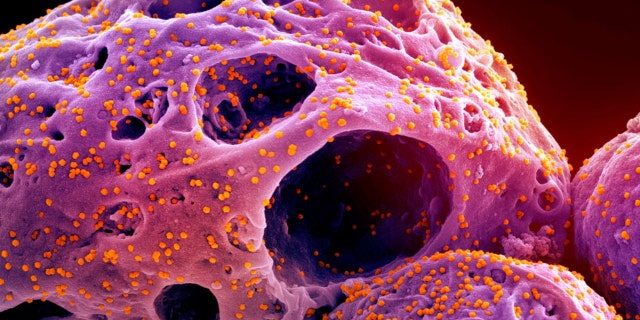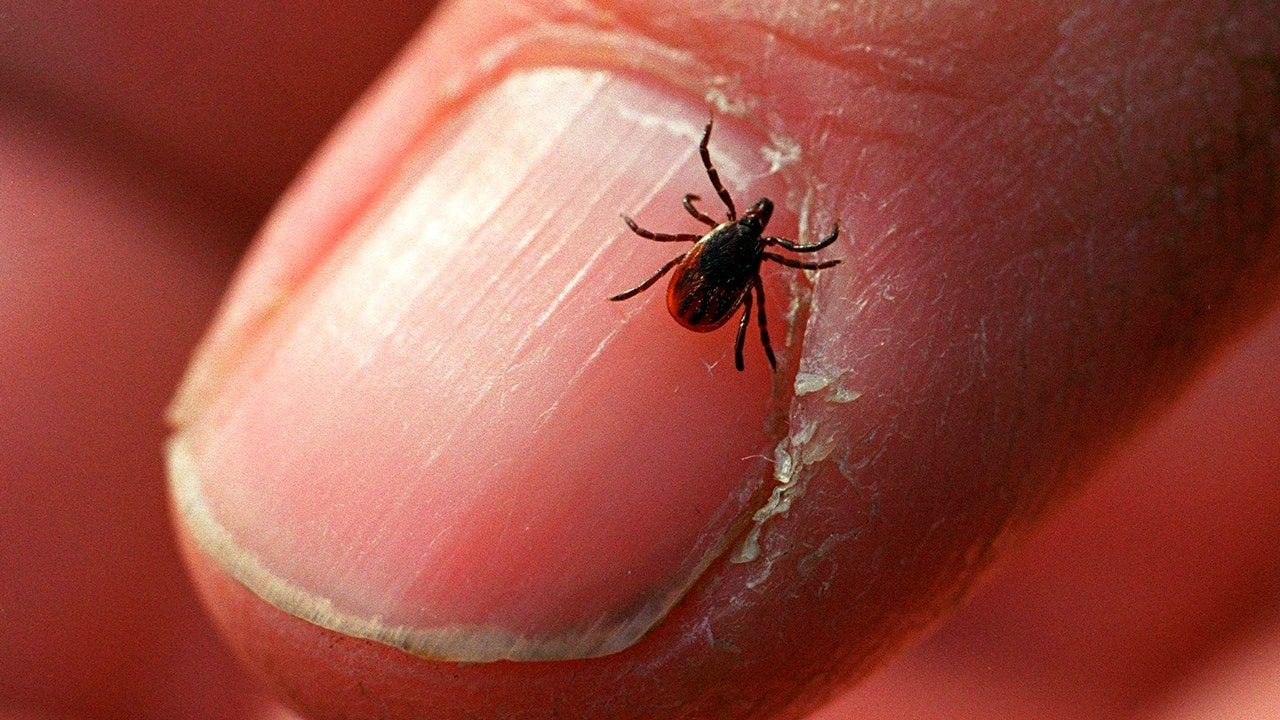Health
US research finds 1 in 10 adults get long COVID after omicron

A new study from the National Institutes of Health found that one in 10 people are getting long COVID after suffering an omicron infection – a lower estimate than earlier on in the COVID-19 pandemic.
The research – which included nearly 10,000 American adults – was published Thursday in the Journal of the American Medical Association.
It spotlights a dozen symptoms that distinguish the long-term effects. Long COVID is broadly defined by the Centers for Disease Control and Prevention as signs, symptoms and conditions that continue or develop after initial COVID-19 infection. It is also sometimes referred to as long-haul COVID, post-acute COVID-19, chronic COVID, Post-COVID conditions and long-term effects of COVID.
The study compared more than 8,600 adults who had COVID-19 at different points in the pandemic with another 1,100 who had not been infected.
WHO CHIEF WARNS OF FUTURE PATHOGENS WITH ‘EVEN DEADLIER POTENTIAL’ THAN COVID-19
This undated, colorized electron microscope image made available by the U.S. National Institutes of Health in February 2020 shows the Novel Coronavirus SARS-CoV-2, indicated in yellow, emerging from the surface of cells, indicated in blue/pink, cultured in a laboratory. The sample was isolated from a patient in the U.S. There is less risk of getting long COVID in the omicron era than in the pandemic’s earlier waves, according to a study of nearly 10,000 Americans that aims to help scientists better understand the mysterious condition, published in JAMA on Thursday, May 25, 2023. (NIAID-RML via AP)
Around one in three COVID-19 patients have experienced long COVID, which was similar to study participants who reported getting sick before omicron began to circulate widely in the U.S. more than two years ago.
Notably, that is also when the study opened, and researchers pointed out that people who already had long COVID symptoms may have been more likely to enroll.

This colorized electron microscope image made available by the National Institute of Allergy and Infectious Diseases in November 2022, shows cells, indicated in purple, infected with the omicron strain of the SARS-CoV-2 virus, orange, isolated from a patient sample, captured at the NIAID Integrated Research Facility in Fort Detrick, Maryland. (NIAID/NIH via AP)
Conversely, around 2,230 patients had their first infection after the study started, allowing them to report symptoms in real time.
Just about 10% experienced long-term symptoms after six months.
KENTUCKY HONORS THOSE LOST TO COVID-19 WITH NEW MEMORIAL
While millions of people around the world have had long COVID, symptoms vary and scientists still do not know what causes it, why only some people get it and even how best to diagnose it.
The study focused on a dozen symptoms, including fatigue, brain fog, dizziness, gastrointestinal symptoms, heart palpitations, sexual problems, loss of smell or taste, thirst, chronic cough, chest pain, worsening symptoms after activity and abnormal movements.

The COVID-19 testing line wrapped around the block at Long Beach City College PCH campus according to social media and on site workers Dec. 27, 2021. (Brittany Murray/MediaNews Group/Long Beach Press-Telegram via Getty Images)
Others shared by the CDC include fever, difficulty breathing and concentrating, headache, problems sleeping, feeling pins and needles, dizziness when standing up, depression or anxiety, joint or muscle pain, rash and changes in menstrual cycles.
The study’s authors assigned scores to the symptoms, hoping to establish a threshold, although one doctor stressed medical professionals should not use the list to diagnose someone with long COVID.
The Associated Press contributed to this report.

Health
fatty15 has the essential nutrient to ease stress and well-being

Sign Up
Create a free account to access exclusive content, play games, solve puzzles, test your pop-culture knowledge and receive special offers.
Already have an account? Login
Forgot your password?
Get back to the Sign In
Use left and right arrow keys to navigate between menu items.
Use escape to exit the menu.
Health
Summer is tick season, but these tips can help you avoid the bloodsucking bugs

Tick season is starting across the U.S., and experts are warning the bloodsuckers may be as plentiful as ever.
Another mild winter and other favorable factors likely means the 2024 tick population will be equal to last year or larger, some researchers say.
“It’s very bad and has only been getting worse,” said Susanna Visser of the Centers for Disease Control and Prevention.
TICK BITES AND LYME DISEASE: WHAT TO DO IF A TICK BITES YOU OR YOUR PET
An increasing variety of ticks are pushing into new geographical areas, bringing unusual diseases. Exotic southern species like the Gulf Coast tick and the lone star tick are being detected in New York and other northern states, for example.
But the tick that experts warn of the most is a common blacklegged tick, which is found mainly in forests and spreads Lyme disease. Infection rates begin to peak in May, and U.S. health officials estimate nearly half a million Lyme disease infections happen annually.
Here’s a look at what’s expected this year and how you can protect yourself.
An adult deer tick, also known as the blacklegged tick, crawls on a fingernail at Connetquot State Park in Oakdale, New York on Dec. 27, 2011. (Bill Davis/Newsday RM via Getty Images)
TICK FACTS
Ticks are small, eight-legged bloodsucking parasites — arachnids, not insects — that feed on animals and sometimes people. Some ticks are infected with germs that can cause illness, and they spread those germs when they bite.
There is no widely accepted estimate of how many ticks there are from one year to the next, but there is a scientific consensus that they are an increasingly common health hazard in large portions of the United States.
Blacklegged ticks — also known as deer ticks, since they feed on deer — are among the most common ticks in the eastern half of the U.S. They were plentiful centuries ago, then diminished when forests were cut down and deer were hunted, and rebounded alongside deer and wooded suburbs. The ticks have spread out from pockets in New England and the Midwest over a wider range.
Tick populations cycle throughout the year and their numbers depend on a few factors. They like warm, humid weather, and more can be seen after a mild winter. The more deer and mice available to feed matters, too.
Overall, the blacklegged tick population has been expanding for at least four decades, researchers say.
“This is an epidemic in slow motion,” said Rebecca Eisen, a CDC research biologist and tick expert.
2024 TICK SEASON FORECAST
Weather can play a role in the severity of a tick season.
Very cold, dry winters can whittle down tick populations, but recent winters have been mild — a trend some attribute to climate change.
As Scott Williams, a tick researcher at the Connecticut Agricultural Experiment Station, said: “Winters are no longer limiting the tick population.”
Ticks can withstand the heat but tend to almost hibernate when it’s a dry summer. That happened in Maine in 2020 through 2022, said Chuck Lubelczyk, a vector ecologist at the MaineHealth Institute for Research.
But last year was a very wet year, and tick activity multiplied in Maine — the state with the highest incidence of Lyme disease in the country. Weather service predictions call for higher temperatures and precipitation, so “on paper, at least, it could be a very good year for the ticks,” Lubelczyk said.
In Wisconsin, adult ticks were out longer than usual due to a mild winter. The tick nymphs are starting to emerge, and a wet spring is setting the stage for the possibility that the population will be robust, said Xia Lee, an entomologist at the Wisconsin Department of Health Services.
Ditto New York.
“It will be as bad as last year, or worse,” said Saravanan Thangamani, who studies ticks and tickborne diseases at SUNY Upstate Medical University in Syracuse.
WHAT IS LYME DISEASE?
Not all ticks are infected with disease-causing germs — about 20% to 30% of the blacklegged tick nymphs that emerge in the Northeast and Midwest this spring and into summer will be carrying the bacteria that causes Lyme disease, experts estimate.
Lyme disease symptoms tend to start between three and 30 days after a bite occurs and can include fever, headache, fatigue and a bull’s-eye-like rash. If you get bitten and develop symptoms, see a doctor to get treated with antibiotics.
HOW TO KEEP TICKS OFF OF YOU
Experts say the best thing to do is take steps to avoid a tick bite in the first place.
If you go outdoors, make note of wooded areas and where grassy properties start bleeding into wooded areas. Ticks tend to perch on ankle-level vegetation with their upper legs outstretched, waiting to latch on to an unsuspecting dog or human.
Try to walk in the middle of paths, wear light-colored and permethrin-treated clothing and use Environmental Protection Agency (EPA)-registered insect repellents.
HOW TO CHECK FOR TICKS
When you come inside, check for ticks. They can be found anywhere on the human body, but common spots include around the waist, behind the knees, between fingers and toes, on underarms, in the belly button and around the neck or hairline.
They are harder to see when they are young, so look carefully and immediately pull them off with tweezers.
The CDC does not recommend sending individual ticks to testing services for analysis, because a person might get more than one tick bite and the results from the tested tick may not be sufficient information.
Health
Pizza for Weight Loss? Top MD Says This Dough Makes It Possible

Sign Up
Create a free account to access exclusive content, play games, solve puzzles, test your pop-culture knowledge and receive special offers.
Already have an account? Login
Forgot your password?
Get back to the Sign In
Use left and right arrow keys to navigate between menu items.
Use escape to exit the menu.
-

 Politics1 week ago
Politics1 week agoRFK Jr said a worm ate part of his brain and died in his head
-

 World1 week ago
World1 week agoPentagon chief confirms US pause on weapons shipment to Israel
-

 World1 week ago
World1 week agoConvicted MEP's expense claims must be published: EU court
-

 News1 week ago
News1 week agoStudents and civil rights groups blast police response to campus protests
-

 Politics1 week ago
Politics1 week agoCalifornia Gov Gavin Newsom roasted over video promoting state's ‘record’ tourism: ‘Smoke and mirrors’
-

 Politics1 week ago
Politics1 week agoOhio AG defends letter warning 'woke' masked anti-Israel protesters they face prison time: 'We have a society'
-

 News1 week ago
News1 week agoNine Things We Learned From TikTok’s Lawsuit Against The US Government
-

 Politics1 week ago
Politics1 week agoBiden’s decision to pull Israel weapons shipment kept quiet until after Holocaust remembrance address: report














